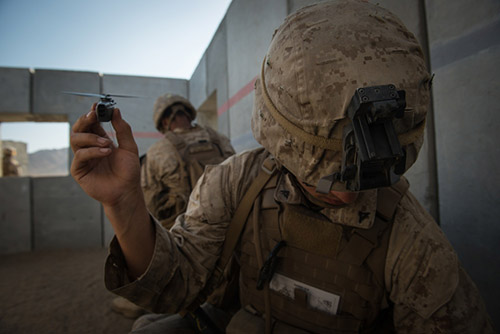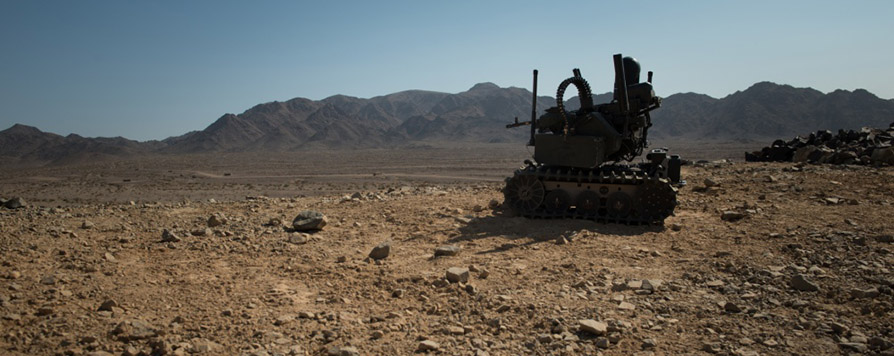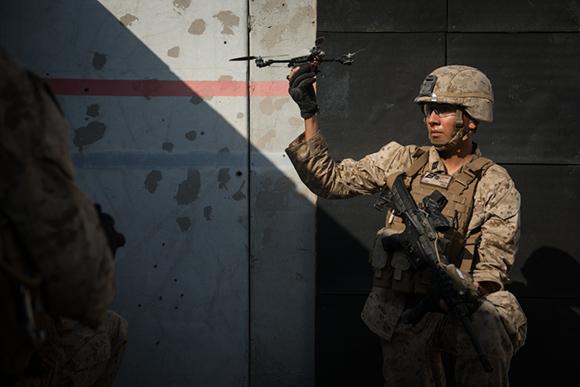By the end of next year, each Marine Corps team will be equipped with a drone for reconnaissance and surveillance. This is what the Marine Corps Operating Concept.
In the new reference doctrine for future operational contexts, the use of drones is considered imperative. The goal is to provide each infantry squad with a low-cost drone. The maneuvers carried out during the Marine Air Ground Task Force Integrated Experiment 2016, last August, they validated the new theories for assisted teams.
It is not yet clear how the manufacturer of the new commercial drone will be selected. Excluded from this supply are the tactical micro drones currently tested by the Marines, the cost of which is close to 60 thousand dollars (photo below on the right). The use of 3-D printing is likely to meet the logistical demands of the Marine Corps.
In Marine Corps Operating Concept autonomous UAV squadrons are also planned to support the front line units.
Unlike current models like the MQ-9 Reaper, the drones conceived in the new reference doctrine will be completely autonomous. Control of the swarm will be via a sort of audio headset. Instead of having a constant stream of data that requires a full-time operator to review and interpret the images, the drones will manage themselves and be able to react to threats. The new concept of autonomy is based on the human presence in the decision-making cycle in the exclusive use of lethal force. In all other cases, the UAVs will be autonomous.

The swarm hypothesized by the Marine Corps will consist of a minimum of ten to a maximum of 40 drones of different types. The RQ-11 tactical drone Raven it has an autonomy of about 90 minutes. The new UAV component in support of the Marines will have to fly for 12 hours or, in any case, the time necessary to complete a single mission. If the situation requires it, the drones will be able to ensure a continuous presence.
According to the report, a three-person ground crew should be able to logistically support a formation of 40 drones weighing between two and twelve kilos. The swarm will consist of several UAVs like it Switchblade, kamikaze drone with a half kilo explosive warhead. Also planned are a number of laser-guided or GPS-guided micro-ammunition currently being tested.
The armed swarm is designed to cancel the waiting times of a classic air support.
Within three years, the Marine Corps hopes to put the first independent robotic swarm into service.
 (photo: USMC)
(photo: USMC)












